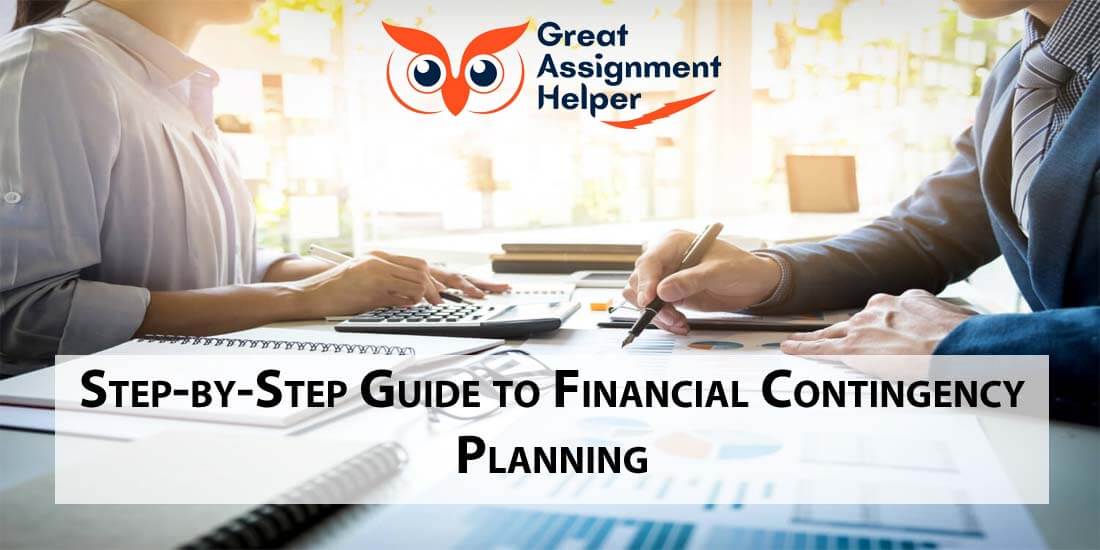
Listen To This Blog
Introduction
Let's be real, financial contingency planning may not seem exciting, but it's crucial. As a student, having a plan in place can help ensure that you're prepared for unexpected expenses and emergencies. From unexpected car repairs to unexpected medical bills, anything can happen. Financial contingency planning lays out, in advance, how to quickly respond to each of these scenarios and get back on track. In this step-by-step guide, we’ll explore the importance of finance assignment help planning for students, key steps to creating a plan, and common mistakes to avoid. So, let's dive in and get you started on your financial contingency plan!
Why Students Need Financial Contingency Planning
Financial contingency planning may sound complicated, but the process is simply about preparing yourself for the worst-case scenario, including the potential challenges faced by students. As a student, your financial situation can be uncertain and unpredictable, and you may find yourself in need of assistance. This is where Finance assignment help can prove to be invaluable in ensuring that you have the necessary support to overcome any financial hurdles that may arise. Contingency planning, in this context, can help you proactively address and manage financial difficulties during your academic journey.
Having a financial plan is crucial for students to manage the ebbs and flows of expenses that come along with post-secondary education. It's not just about paying tuition and rent; it's also about unexpected expenses like medical bills, car repairs, or replacements for lost or stolen electronics.
Expenses like these can be stressful to manage on top of an already tight budget. Having a financial contingency plan gives you peace of mind, knowing that you're prepared for whatever comes your way. Knowing how to take action during a crisis can also help you avoid or mitigate the financial fallout that may come with it.
While creating a financial contingency plan may seem intimidating, it's a worthwhile investment of your time and effort. This guide will show you how to develop a step-by-step financial contingency plan that works for you. It's all about taking proactive measures to ensure your financial security and giving yourself one less thing to worry about.
Step-by-Step Guide to Financial Contingency Planning
Now that we have established why financial contingency planning is crucial for students, it’s time to delve into the step-by-step process of creating a foolproof plan that will set you up for success.
1. Assess Your Current Financial Situation
The first step in financial contingency planning is to evaluate your current financial status. This includes taking a closer look at your income, expenses, debts, and assets. Once you have a clear understanding of where you stand financially, you can identify areas that need improvement.
Take into account your monthly income, any debt or recurring expenses, and other financial obligations. Based on these factors, you need to determine your average monthly expenses and set realistic financial goals for yourself.
2. Set Financial Goals
The next step is to set financial goals that align with your long-term objectives. This can include short-term objectives like saving for a new laptop or long-term goals like reducing student loan debt.
Once you have established your basic financial goals, you can start planning how to achieve them. For instance, if you aim to cut down your monthly expenses, you can consider alternative options like cooking at home instead of eating out or taking public transit instead of owning a car.
3. Establishing a budget and, consequently, adhering to it is crucial.
Financial contingency planning requires that you create a budget and track your expenses meticulously. Creating a budget involves breaking down your monthly expenses into fixed and variable categories. Fixed expenses are those that remain the same each month, such as rent, utilities, or insurance, while variable expenses change from one month to another, such as food, transportation, or entertainment.
Once you have determined your expenses, create a budget that works for you and stick to it. This will help you avoid overspending and save more towards your goals.
4. Build an Emergency Fund
An emergency fund is a crucial component of financial contingency planning. This should be a separate account or fund that you specifically put aside for emergencies, such as car repairs, medical expenses, or unexpected unemployment.
To illustrate, experts advise that you should allocate a minimum of three to six months' worth of living expenses to your emergency fund. It may take time to build up this reserve, so start with small contributions on a regular basis that will eventually add up to a substantial amount.
5. Explore Additional Income Opportunities
Creating multiple sources of income is smart financial planning. This can help provide a safety net in case one source of income is disrupted unexpectedly. Working part-time, freelancing, or selling items online are just a few examples of how you can supplement your income.
There are plenty of opportunities to earn extra cash and it’s worth exploring the options available to you. Just ensure that they don’t impact your studies negatively.
By following these steps, you can create a solid financial contingency plan that will help you stay prepared for any unexpected financial setbacks. Remember to be diligent and consistent, and don’t hesitate to seek guidance from professionals when necessary.
Tips for Successful Financial Contingency Planning
Of your response to unexpected events that impact your business. However, crafting a plan is merely the initial stage. To ensure its effectiveness, you need to stay disciplined and consistent in following it. Regularly review and adjust your plan based on changing circumstances. Don't be afraid to seek professional guidance when necessary. Keep in mind that a financial contingency plan is only as good as its execution. So, be prepared, stay informed, and stay ahead of potential crises. With the right mindset and tools, you can successfully navigate through any unexpected challenges that come your way.
Common Mistakes in Financial Contingency Planning and How to Avoid Them
Financial contingency planning is an essential component of safeguarding your finances against unexpected circumstances. However, many students make common mistakes that can jeopardize their contingency plans. One such mistake is underestimating expenses. While it's important to set a budget for your basic needs, you should also factor in potential emergencies and unforeseeable expenses such as medical bills or car repairs.
Another common mistake in financial contingency planning is failing to account for debt. It's crucial to consider your outstanding debts and account for them in your plan. Not doing so might lead to further financial difficulties in the future. Additionally, not saving enough for emergencies is another mistake that students frequently make. Ideally, you should aim to have 3-6 months' worth of living expenses saved up to help you weather any unforeseen financial issues.
Lastly, not sticking to the plan is another common mistake students make. Although it's easy to get off track, sticking to the plan is crucial to ensure its success. Keep an eye on your spending habits, adjust your budget accordingly, and review your plan regularly to meet your financial goals. Remember, building a solid contingency plan is a key part of securing your financial future.
Resources and Tools to Help with Financial Contingency Planning
Financial Planning Apps, online budgeting tools, and investment and savings accounts are among the resources and tools available to students to help them with financial contingency planning. These apps and tools offer customized budget strategies, reminders for bill payments, savings goals, and investment opportunities. They also track expenses and offer insights into spending patterns, making it easier to create and stick to a budget. By using these resources, students can take control of their finances, even in the face of extraordinary threats and crises.
Conclusion
A financial contingency plan is crucial for students to weather any unexpected financial crisis in college, including when seeking assignment help. By assessing their current financial situation, setting financial goals, creating a budget, building an emergency fund, and exploring additional income opportunities, students can be better prepared for emergencies, as well as for academic assistance. Remember to stay disciplined, review and adjust your plan regularly, and seek professional guidance when necessary, especially when managing expenses related to assignment help. Use financial planning apps, budgeting tools, and investment/savings accounts as resources to effectively manage your finances, even in uncertain times.
Read more: How to Check Plagiarism in Word Document: A Comprehensive Guide for Students | Great Assignment Helper.

